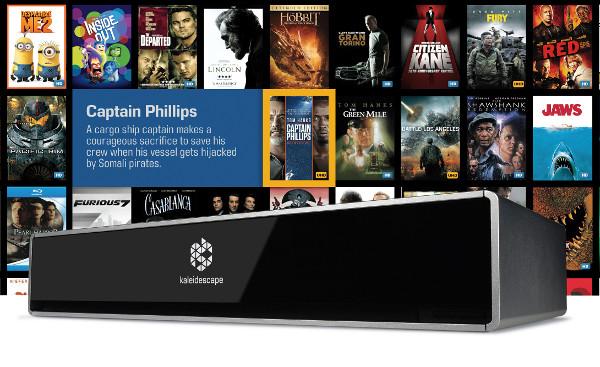Waaaay too expensive for what it does. This thing died right along with the HTPC. There is no reason to store massive amounts of movies unless you just like collecting movies.
Did Streaming Finally Kill Serving?

I have covered Kaleidescape and been a close friend of the company almost since its inception. In fact, I was one of the first reviewers to look at the company’s initial product offering for Sound & Vision back in 2003. I can remember then editor-in-chief, Bob Ankosko, calling me and grousing, “I don’t know what this thing is, Sciacca, but they made me sign a personal guarantee for $30,000, so you better get it back to them in one piece!” Since that time, I’ve reviewed every new product the company has produced and have a system in my home that I use virtually every day.
Over my years writing for S&V, the movie server category was always very close to my heart and a beat I relished covering. I love watching movies on my home theater and have a fair-sized collection of more than 400 DVDs and Blu-ray Discs, so it was easy to relate to the convenience of having a well-designed movie management system.
My first foray into disc management included reviews of Escient and ReQuest, both of which interfaced with a Sony 400-disc DVD changer. Sure, the operation was slow and a bit clunky, but both systems gave users a convenient place to store all of their movies and browse titles in a far more expedient manner than looking through an Excel spreadsheet or thumbing through piles of disc cases. When I first saw Kaleidescape in operation—virtually the entire company gathered in Runco’s booth at CEDIA in 2003, demonstrating with the premier display provider at the time—I was stunned. The interface was so elegant, access times were nearly instantaneous, it skipped over all trailers and ads, and the experience was unlike anything else around.
At each following CEDIA, I prowled the show looking for new companies getting into the video server space, trying to find something similar to Kaleidescape but at a more affordable price. Contenders included Escient Vision, Colorado vNet Vibe, Xperinet MIRV, Sunfire Theater Grand Media Player, and Leviton LEAPS. In addition to those were the AMX MAX, Niveus, Crestron ADMS, and a Sooloos solution that was demonstrated—and promised—but never came to fruition.
All of these systems—and many of these companies—are gone now.
Which makes me wonder, why is the movie server product category so difficult to survive in?
Part of the issue has to do with the fact that video is just much harder—and more expensive—to do well than audio. Movies require dealing with much larger file sizes, and video processing is far more complex than passing a FLAC or MP3 file. You’re also dealing with Hollywood on the content side and encryption and anti-piracy issues that are still more black than gray when it comes to importing.
Cost was certainly also an issue. Even “inexpensive” movie server solutions ran thousands of dollars. Today, with decryption software widely available, massive NAS drives at affordable prices, quality software like Plex Media Server, Kodi (formerly XBMC), and PlayOn, and streaming devices like Roku, Amazon Fire TV, and PlayStation already in many homes, tech-inclined movie lovers can build and maintain their own movie servers at a far lower cost, albeit without the polished elegance and simplicity offered by a system like Kaleidescape.
Even so, I think the idea of the movie server has become lost to the issue of convenience over quality. Just as people would rather stream from Pandora or Spotify than pull from their CD collection, most are opting for the Netflix, Amazon, iTunes, Vudu, Hulu, and cable/satellite VOD offerings so prevalent today. People seemed to have stopped “collecting” movies in physical format and are content watching in whatever digital option is most convenient.
While discs still offer the highest-quality presentation—especially now that Ultra HD Blu-ray is delivering true 4K with HDR and object-based audio—the sun may have finally set on physical media, which could truly be a sad day for movie lovers everywhere.
At CEDIA, Kalediescape’s CEO, Cheena Srinivasan, told me delivering the highest-quality UHD content via its movie store—not discs—and offering “disc-equivalent bits” via a convenient download is the key focus of the “new” Kaleidescape with its Strato movie player. The silver lining could be that the traditional movie server category evolves into the next great entertainment solution.
- Log in or register to post comments





































































